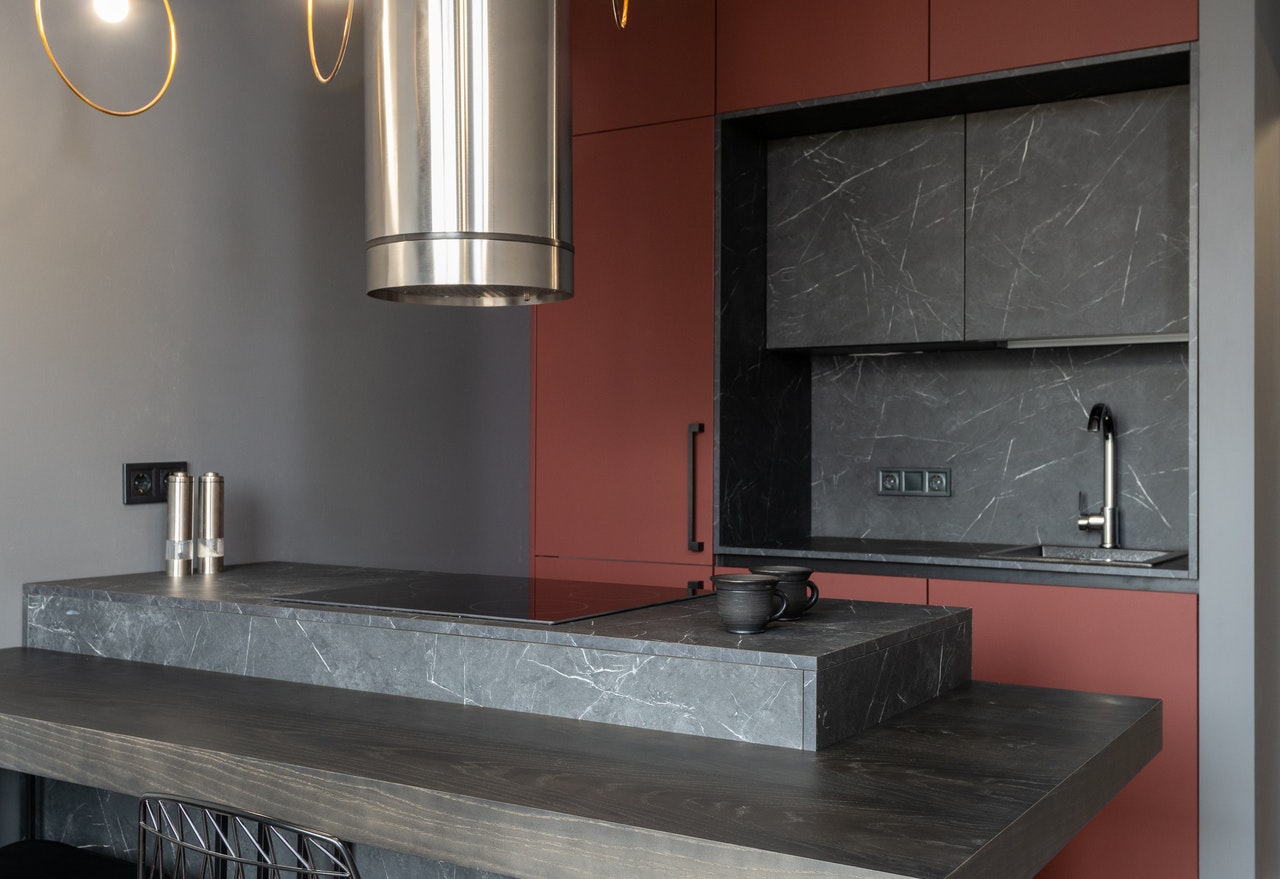While furniture and decor are prominent elements in interior design, the natural textures and finishes of these items are just as important to make a home feel up to date and luxurious. If you are looking to revamp your home, the bathroom and kitchen are usually the first areas that feel outdated, so naturally they would get the most attention. Natural elements of stone such as granite or marble are usually added to enhance these spaces. However, in recent times these stones are being used for more than just the kitchen and bathroom countertops. Stone tables, decor pieces or cabinets and tiles are all receiving the stone finish, and are a feast for the eyes.
Granite
Probably one of the most common stones that you would think of when referring to kitchen countertops is granite – and with good reason. It is a hard-wearing stone that is composed of quartz, feldspars, micas and other minerals to name a few. This perfect mix of elements contribute to the colour and texture of stone, helping to create a wonderful variety of colours and patterns from minerals that are melted into the liquid mass as it is formed. The colour spectrum is vast when it comes to granite, from darks all the way to lights.
Sturdy and strong, granite is resilient to stains, spills and heat, so it’s great for a messy cook. Avoid cutting foodstuffs on the surface as it can blunt knives. To avoid bacteria growing, it’s recommended that you make use of a good sealant.
Common uses for granite include kitchen countertops, vanity tops, bath surrounds, windowsills, outdoor counters, bar countertops, staircase cladding and wall cladding.
Marble
The epitome of elegance and class, marble is a stone that has been around for a number of years. If we look at its contents, marble consists of calcite – broken rocks, plants and shellfish, which under high pressure and over time was formed roughly 1.5 to 3 billion years ago. As a result of the differences in its mineral content, marble has varied greatly in colour and hardness into what we see today.
This classic stone brings a certain elegance to any kitchen and is perfect for pastries due to its cool temperature. As a soft stone, marble stains and etches easily, so if you are a bit forgetful when it comes to keeping the counters clean, consider installing a different material. If pricing is a problem, choose marble accessories instead – they add a touch of luxury without the hefty added cost. Using these subtle marble details still adds to the luxe of your home while avoiding the heavy investment. However, if you’ve got the money for it, marble flooring and countertops are a great way to add value to your home.
Onyx
Onyx, a stone that is often confused with marble, is completely different in so many ways. One of its main qualities is its lack of opacity, making the stone quite translucent. This quality is perfect for allowing light to filter through it in creative ways, adding to the ambience of the room. The mysterious glow and its wavy patterns are just some of the reasons we can’t seem to get enough of this stone. When it comes to onyx, the colour variety can range from pink to jade – another reason that this stone seems to be gaining popularity.
Simply put, onyx forms from water that has a considerable amount of calcite dissolved in it, and is therefore on the fragile side of life. It’s best used in areas that don’t see much heavy usage, or you’ll scratch and damage this precious stone. This is perhaps why a number of people use it as a backsplash or statement wall, since these functions don’t require much handling. Onyx is a beautiful stone that isn’t limited to slabs, as it can be shaped into basins or fixtures. With such a wide variety of uses, it’s no wonder this is such a favoured stone.
Words: Yashna Balwanth | Photography: Max Vakhtbovych from Pexels







